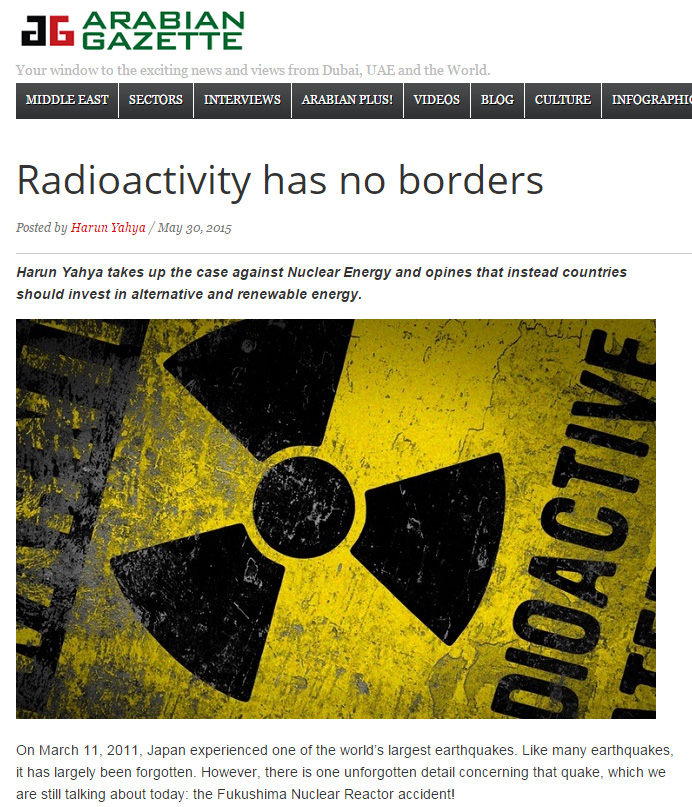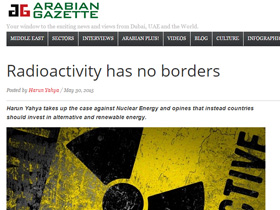
On March 11, 2011, Japan experienced one of the world’s largest earthquakes. Like many earthquakes, it has largely been forgotten. However, there is one unforgotten detail concerning that quake, which we are still talking about today: the Fukushima Nuclear Reactor accident!
During the earthquake, units in the Fukushima nuclear plant that needed to be closed down for safety reasons were successfully closed. The reactor had already been designed to react very swiftly in the event of an earthquake. Once those units had been shut down, generators would go into action to provide electricity for the cooling system that is totally indispensible for nuclear plants; sadly, things did not go as planned. The tsunami that struck one hour after the quake led to massive flooding in the power plant and the diesel generators that should have initiated the cooling process became inoperative.
Even when a nuclear reactor is not working, it still needs to be continuously cooled to prevent against meltdown and radioactive leakage. Breakdowns in cooling systems lead to fires, and leakage of radioactive materials. That was the reason for the accident at Fukushima.
Sadly, it is still impossible to prevent leakage of radioactive materials at the Fukushima nuclear plant. The nuclear threat is posing a risk to the whole world, and particularly Japan. That is because radioactivity knows no borders and continues to spread.
To summarize a few of the effects of the incident:
· Radioactive materials that will continue to pose a danger for 24,000 years have leaked into the sea, soil and air with thousands of tons of water.
· TEPCO (Tokyo Electric Power Company) has admitted that radioactive water is leaking into the sea. (300 tons of contaminated water have leaked into the Pacific Ocean)
· The incidence of thyroid cancer among children in the vicinity has increased 40 times greater than normal.
· Research has identified more than 120 forms of childhood cancer while normally only three should be expected.
· 375,000 young people, approximately 200,000 of them children, were tested by the Fukushima Medical University: Pre-cancer abnormalities were detected in 48% of these. [1]
· Radioactive pollution 100 times greater than normal level has been detected in underground water.
· 160,000 people have been removed from their homes and are not allowed to return.
· The Kyodo news agency reported that backwater contaminated by radioactive materials emits 100 millisieverts of radioactivity per hour. The agency stated that this level surpasses the radiation threshold to which a worker at a Japanese nuclear plant would be exposed to in a year. [2]
· Radiation 2,500 times higher that legal limits has been detected in fish.
As a matter of fact, this data is sufficient to show the scale of the nuclear disaster. However, as the data collected on accidents that have occurred in nuclear plants across the world and their consequences are examined, the extent of the threat on human life and the environmental health will be better understood.
The first serious accident in a nuclear plant occurred at Three Mile Island in 1979. Following a chain of events that led to a partial meltdown of the reactor core, the facility was closed down, never to be reopened again. Following this incident, the number of reactors under construction in the USA fell rapidly. Fifty-one American nuclear reactor projects were cancelled between 1980-1984. In global terms, the increase in nuclear energy plants came to a halt with the even more destructive incident at Chernobyl in 1986. The Chernobyl disaster represents a turning point for the global nuclear energy sector. At least 100 times more radiation than the atom bombs dropped on Nagasaki and Hiroshima was released into the air. [3] The disaster, whose effects can still be felt today, may ultimately lead to the premature deaths of one million people. Following a period of stagnation, the nuclear industry got a second lease due to concerns about anthropogenic climate change and issues of energy independence; the Fukushima disaster set off alarm bells in many countries with nuclear reactors. In a statement in the immediate wake of the incident, Germany announced that it would close all its reactors by 2022 and turn to renewable energy.
So while this is how things stand abroad, what does the world think of the debate over the building of new nuclear plants in Turkey that has flared up again?
Experts who emphasize that Germany and other developed countries have put all plans for new reactors on hold are astonished by Turkey’s insistence on constructing new reactors. That is because, even without any accident or leakage, the damage to human health caused by nuclear reactors is well known.
Dr. Angelika Claussen, a member and current chairman of International Physicians for the Prevention of Nuclear War (IPPNW) has announced that scientific research conducted around the Krummel nuclear facility has identified an increase in incidences of childhood leukemia and thyroid cancer. Those people who so strongly support nuclear energy should ask themselves whether they would want such a plant in their own backyard.
One of the most important, yet little mentioned risk factors, is radioactive waste produced by the reactors as they operate. It is a known fact that nuclear waste does not disappear, but needs to be stored away for hundreds of thousands of years where it cannot reach people, other living things and plants. Aside from the fact that such waste storage facilities can become a target for terrorist attacks, nuclear energy experts have not yet developed the technology to deal with the waste problem. Many countries therefore use less developed countries as nuclear waste dumps.
Nuclear energy is a path with no end. If the demand for nuclear power plants increases the demand for uranium, which is already quite scarce in nature, it will be used up sooner than expected. With the nuclear waste that results, that very brief period will give way to a very long one of serious scourges in the history of the world.
It is not nuclear power plants that our world needs to meet its energy needs. Nuclear power is a model that will poison all the resources of the user countries. Since Turkey stands in first place in Europe in terms of its solar and wind energy potential, it will have no need for nuclear energy if its existing energy resources – resources that do no harm the environment - are used properly.
New policies should be supported in Turkey, rather than turning to nuclear energy and investing tens of billions of dollars in that sector. Encouraging energy conservation, reducing energy waste to a minimum and turning to renewable energy sources such as wind power will mean that nuclear energy no longer need be an option for the country.
Even a country such as Germany, a model on the subject, with its dense population and highly-developed industry (and therefore with very high energy requirements) has turned its back on nuclear power plants. If that is possible for Germany, it is perfectly doable for Turkey as well.
Let us not forget that nothing is more precious than human life.
Adnan Oktar's piece on Arabian Gazette:
http://www.arabiangazette.com/radioactivity-has-no-borders-20150530/


